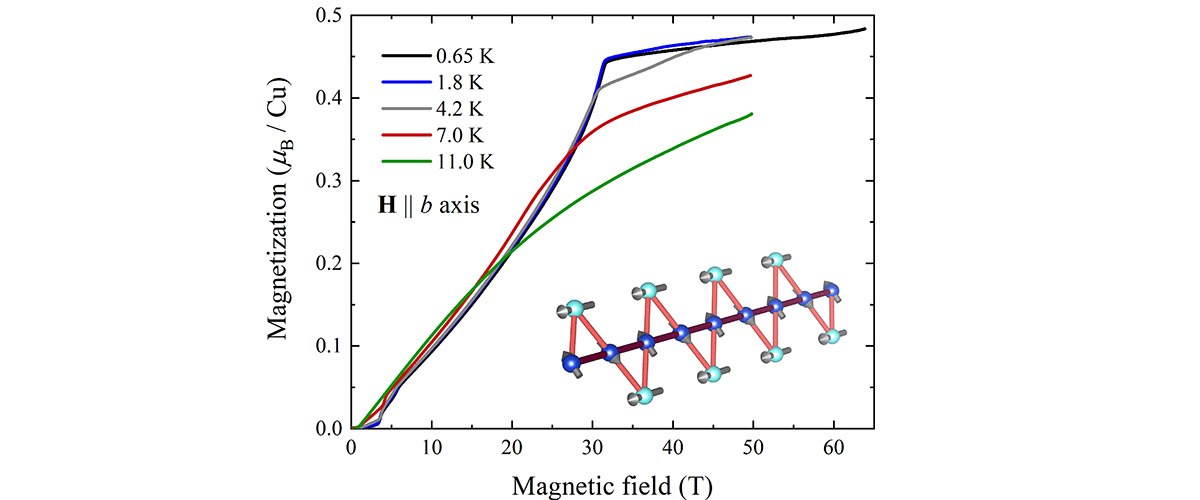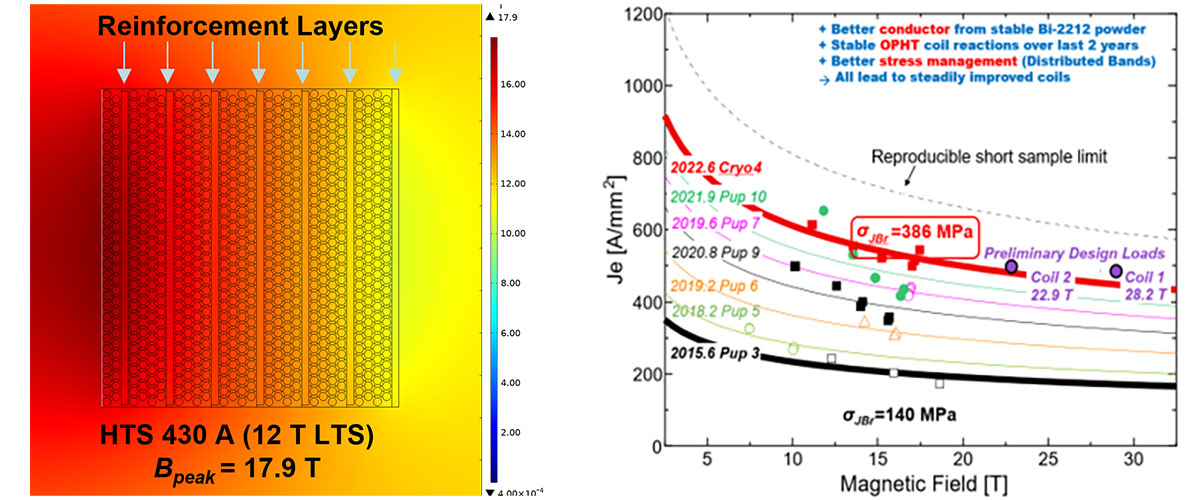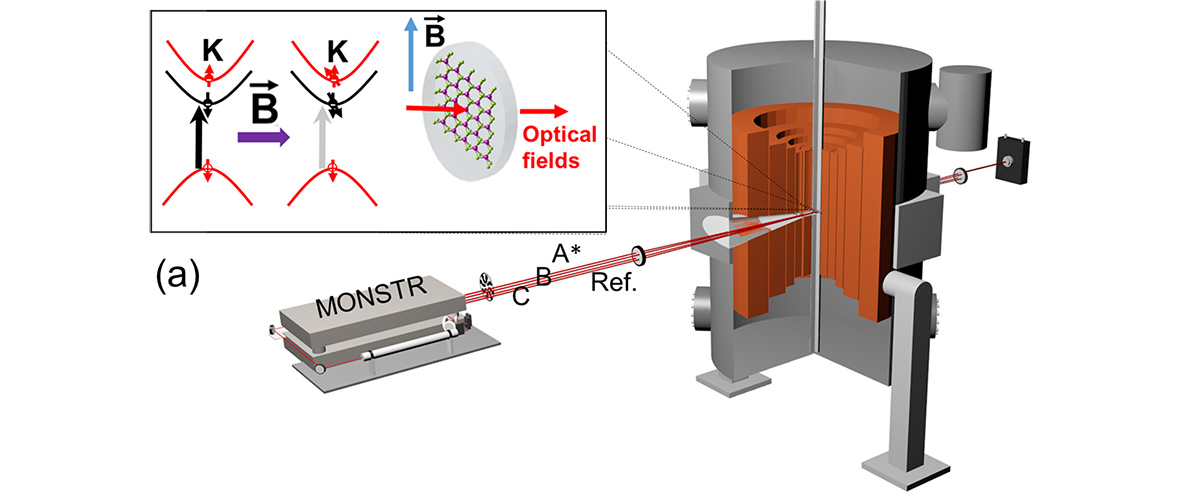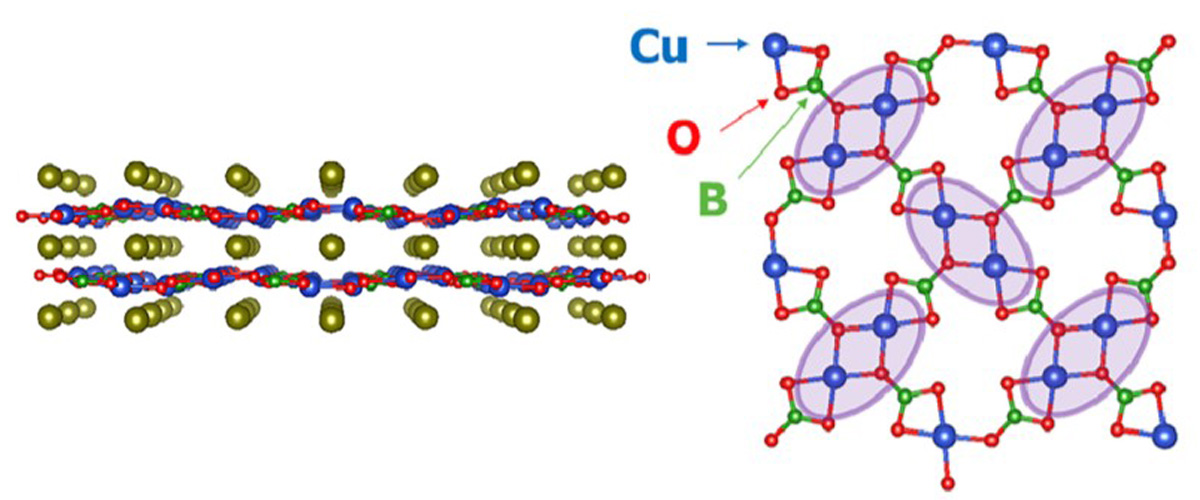What did scientists discover?
Applying an intense magnetic field to the mineral atacamite Cu2Cl(OH)3 induces an unusual magnetic high-field state where the magnetization flattens at around half of its full saturation value (see Fig. 1). Spins in a sawtooth-shaped chain made of atomic nanomagnets won't align in an external magnetic field as had been predicted by theory. Near neighbor competing and frustrated interactions between the spins appear to be keeping half of them disorganized in a state of magnetic confusion, thereby meeting a key requirement for a novel state of matter known as quantum spin liquid.
Why is this important?
Atacamite is a so-called "frustrated" quantum magnet – a magnetic system in which the competition between the magnetic interactions is so strong that it can prevent the system from ordering. In such frustrated systems, a multitude of complex and novel magnetic states can arise, such as quantum spin liquids and magnetization plateaus. Identifying and characterizing model compounds of frustrated magnets is essential to understand the mechanisms behind still undiscovered novel states of matter that are predicted to host fractionalized excitations and may realize applications in metrology (the science of measurement) and quantum computing.
Who did the research?
L. Heinze1, H.O. Jeschke2, I.I. Mazin3,4, A. Metavitsiadis5, M. Reehuis6, R. Feyerherm6, J.-U. Hoffmann6, M. Bartkowiak6, O. Prokhnenko6, A.U.B. Wolter7, X. Ding8, V.S. Zapf8, C. Corvalán Moya9,8, F. Weickert8, M. Jaime8, K.C. Rule10, D. Menzel1, R. Valentí11, W. Brenig5, and S. Süllow1
1IPKM, TU BS; 2RIIS, Okayama University; 3George Mason University; 4QSEC, George Mason University; 5ITP, TU BS; 6HZB, Berlin; 7IFW, Dresden; 8MagLab, LANL, Los Alamos; 9CNEA, UNTREF, Argentina; 10ANSTO, Australia; 11ITP, Goethe-Universität Frankfurt
Why did they need the MagLab?
In order to drive atacamite into its plateau-like magnetization state, high magnetic fields were required in combination with very low (sub-Kelvin) temperatures. The high-field magnetization and magnetostriction measurements were essential to compare the magnetic behavior to theoretical calculations and to gain insights into the magnetic phase diagram of atacamite.
Details for scientists
- View or download the expert-level Science Highlight, Unusual high-field state discovered in mineral atacamite Cu2Cl(OH)3
- Read the full-length publication Magnetization Process of Atacamite: A Case of Weakly Coupled S = 1/2 Sawtooth Chains, in Physical Review Letters
Funding
This research was funded by the following grants: G.S. Boebinger (NSF DMR-1644779), S. Süllow (DFG WO1532/3-2 and SU229/9-2)
For more information, contact Marcelo Jaime or Neil Harrison.






